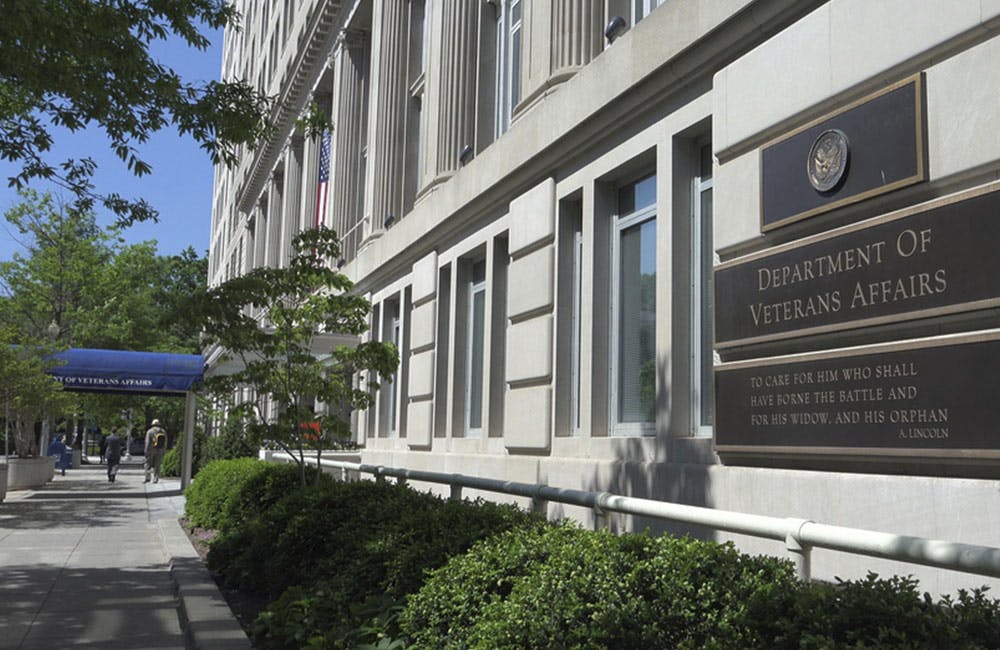Army Eyes JADC2 as it Teases Upcoming Digital Strategy
Ahead of the release of the Army Digital Transformation Strategy, Army CIO Raj Iyer and others discuss what it takes to achieve their vision of a unified network.

The Army’s vision of a unified network will drive its digital transformation strategy, which CIO Raj Iyer said will be released sometime in the next month.
At the Association of the United States Army (AUSA) annual conference, Iyer and other top IT leaders at the Army described cloud and artificial intelligence as key enablers for digital transformation.
Top hurdles include “large volumes of data” and merging the tactical network with the strategic network.
Underpinning all digital transformation efforts, Iyer said, is complete cultural overhaul.
“Digital is all about a change in mindset,” he said at the AUSA annual conference last week. “My job is to become that easy button so we can innovate. We’re moving away from the industrial age to the digital age.”
Iyer said the soon-to-be-released Army Digital Transformation Strategy (ADTS) will balance competing priorities while ruthlessly prioritizing the Army’s IT portfolio. If the Army doesn’t achieve the right balance of IT priorities, Iyer worries the Army will fall behind in the global race to digital agility.
“Our journey now is JADC2,” Iyer said. “Executive analytics is great, but we need to support multi-domain operations, [and] how we’re going to use that same data and the interoperability of the data across references or platforms. How do we enforce that very early in the lifecycle of these new programs?”
As the Army rolls out digital transformation efforts, cybersecurity cannot be an afterthought, he added.
Army CISO Brig. Gen. Matthew Easley said the White House cybersecurity executive order is his top priority as the Army moves IT operations to the cloud and enables zero trust.
In order to protect the Army’s data, Easley said, the Army needs clear data standards and governance. Army CDO David Markowitz wants data tools and data analytic products to be easy to build and leverage to meet mission needs and mission speed.
Paul Puckett, director of the Army’s Cloud Enterprise Management Office, also said during the conference that enabling people along with the technology will be key.
“Far too often the Army solves problems with people that technology has already solved for us. We need to leverage technology to the greatest extent possible so we can invest our people in solving problems that technology hasn’t yet solved,” Puckett told GovernmentCIO Media & Research.
For the Army’s IT leaders, individual goals all come back to one operational imperative: a unified network that connects and serves all operations at mission speed and enables soldiers to solve IT problems on the ground.
“At the end of the day, we fight with our soldiers. All of these technologies are great, but at the end of the day, it is absolutely critical that we upskill and reskill our workforce, and that includes the military, and the civilian population, to make sure that they can … truly take advantage of digital technologies and drive innovation across an array of software practice[s],” Iyer said.
This is a carousel with manually rotating slides. Use Next and Previous buttons to navigate or jump to a slide with the slide dots
-

VA's Platform One Powers Rapid Innovation to Bolster Digital Services
VA's Platform One accelerates software development timelines from weeks to hours, ultimately enhancing digital services for veterans.
5m read -

Opinion: Original Intelligence Is the Missing Piece for AI Transformation
Limitations of AI agents and development drive growing needs for workforce development and "original intelligence."
3m read -

Pentagon's $200M AI Contracts Signal Broader Effort to Transform Talent
The Army is leveraging Silicon Valley, reservist programs and new hiring strategies to integrate critical digital skills in its ranks.
5m read -

AI Foundations Driving Government Efficiency
Federal agencies are modernizing systems, managing risk and building trust to scale responsible AI and drive government efficiency.
43m watch -

Agencies Tackle Infrastructure Challenges to Drive AI Adoption
Federal agencies are rethinking data strategies and IT modernization to drive mission impact and operational efficiency as new presidential directives guide next steps.
5m read Partner Content -

Generative AI Demands Federal Workforce Readiness, Officials Say
NASA and DOI outline new generative AI use cases and stress that successful AI adoption depends on strong change management.
6m read -

The Next AI Wave Requires Stronger Cyber Defenses, Data Management
IT officials warn of new vulnerabilities posed by AI as agencies continue to leverage the tech to boost operational efficiency.
5m read -

Federal CIOs Push for ROI-Focused Modernization to Advance Mission Goals
CIOs focus on return on investment, data governance and application modernization to drive mission outcomes as agencies adopt new tech tools.
4m read -

Fed Efficiency Drive Includes Code-Sharing Law, Metahumans
By reusing existing code instead of rewriting it, agencies could dramatically cut costs under the soon-to-be-enacted SHARE IT Act.
5m read -

Navy Memo Maps Tech Priorities for the Future Fight
Acting CTO’s memo outlines critical investment areas, from AI and quantum to cyber and space, as part of an accelerated modernization push.
5m read -

DOD Can No Longer Assume Superiority in Digital Warfare, Officials Warn
The DOD must make concerted efforts to address cyber vulnerabilities to maintain the tactical edge, military leaders said at HammerCon 2025.
4m read -

New NSF Program Cultivates the Future of NextG Networks
The agency’s new VINES program looks to tackle key challenges like energy efficiency and future-proofing wireless tech.
21m watch
















